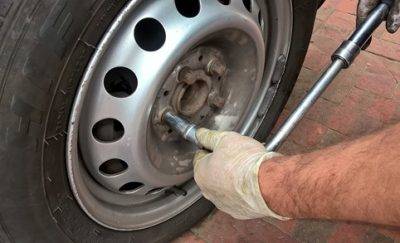
7 Ways to Tell Your Tyres Need Changing
As a new driver, you need to know when it’s time to change your tyres. The condition of your tyres needs to meet certain standards at all times. This is not only a legal requirement to ensure your car passes its MOT every year but also to protect your safety and others on the road. If your tyres are worn then you won’t have as much control while driving. It’s important to have them checked regularly and replaced if necessary. Fortunately, there are several ways you can tell if your tyres need changing.
The tread has worn away
The tread is the grooved rubber edge of your tyre and it needs to be at least 1.6mm for you to drive legally. If it is too worn then you’ll need to have your tyre replaced. There is an easy way to check if your tyre tread is below the required depth. Put a 20p coin in the groove of the tread, and see if the tread is still higher. If it is, then your car should still meet the legal requirements. Check several places in the tyre to make sure. If you do need replacement car tyres, then don’t worry, you can find plenty online.
There’s a big hole in the tread
If it’s not obvious, a hole in the tread also means your tyre needs changing. This is the kind of thing you need to be inspecting your tyres for regularly. Some damage can, of course, be repaired but a hole bigger than 6mm is too risky. Always speak to your local garage if you’re unsure. Here are some more useful tips for maintaining your first vehicle.
A crack in the sidewall
If you’re inspecting your tyres for damage you can also use the RAC guidelines. These will help you identify things like holes and cracks. Your tyres will, unfortunately, deteriorate over time. They go through a lot of friction and corrosion and too much time on the roads will wear them out. Adverse weather conditions don’t help either. If you notice a crack in the sidewall of your tyre this means it has succumbed to too much wear and tear. If you don’t have it replaced immediately it could be very dangerous.
Irregular bumps in the tyre
Lumps and bumps could be an indicator of internal damage, on the other hand. Be sure to inspect your tyres for any strange irregularities such as bumps or blisters. These are defects and your tyres will most likely need to be changed immediately, so don’t hesitate to have them checked out asap.
A bumpy ride
If the ride itself is bumpy this could also be a sign that your tyres need changing. Damaged or deflated tyres will cause your car to bump or shake. This is just one of the reasons your vehicle isn’t driving smoothly, however, so take your car to the shop. There could be a problem with your suspension, transmission, or even brakes so it’s better to err on the side of caution. A smoother ride is not only more comfortable, but it’s also safer.
Funny noises
Listen out for funny noises as well, such as creaking or squeaking. These could be due to many reasons, but they’re never a good sign. If the problem is your tyres, a change in air compression will produce an odd noise due to punctures or other damage. In any case, if your car is making odd noises you should have it looked at straight away. Even if your tyres are fine, there could be another underlying problem to sort out.
They’ve reached their shelf-life
Sadly, all tyres have a shelf-life. This can’t always be defined in time but the average mileage of most tyres is 20,000 miles. If your tyres are ten years old then get them replaced. You should have them inspected many times before they reach this age. Typically, tyres last from five to ten years unless they’re damaged but you can’t always rely on their shelf-life. You can check what the manufacturer says about their average mileage as an indication, but have them inspected by a professional every year.
Now that the cold weather is on its way it’s more important than ever to check your tyres. You should ideally give them a quick inspection once a month even if you don’t experience any issues. This way, you can rest assured they’re in a safe condition to drive and you can feel more confident on the road.
More from Blue School Of Motoring: